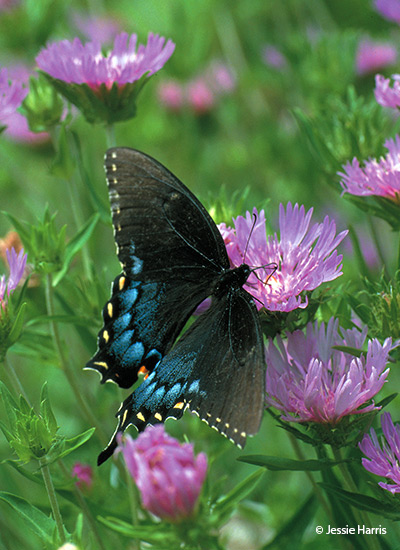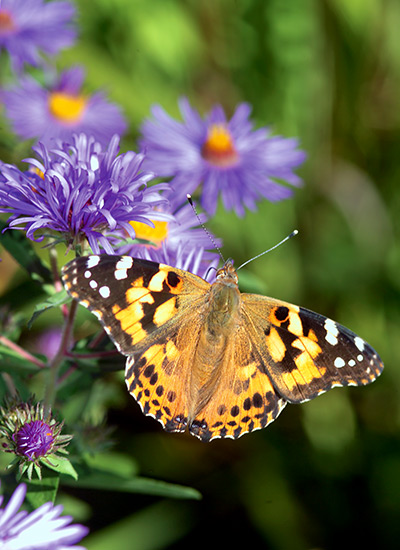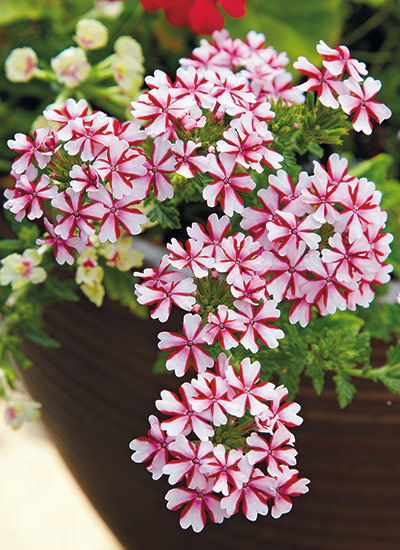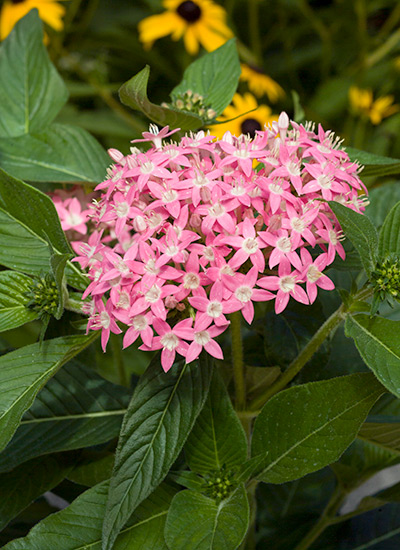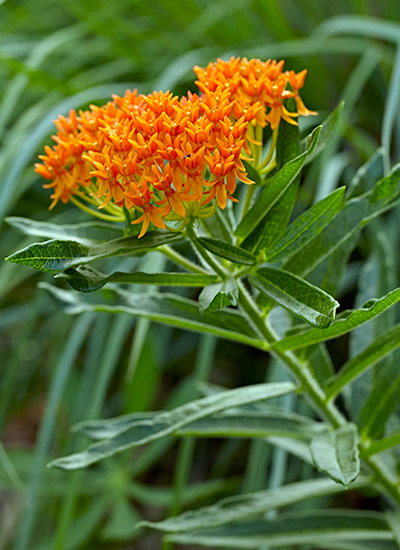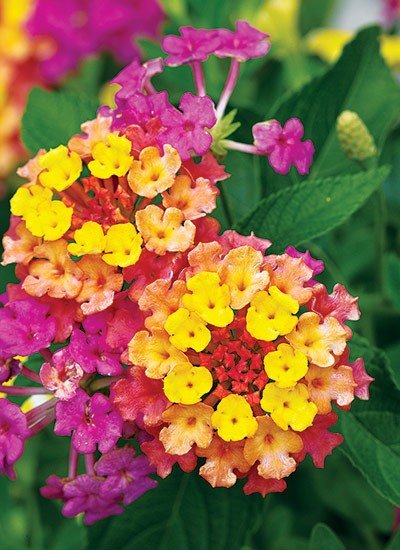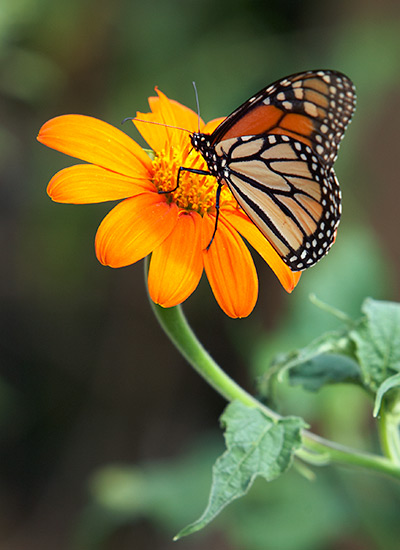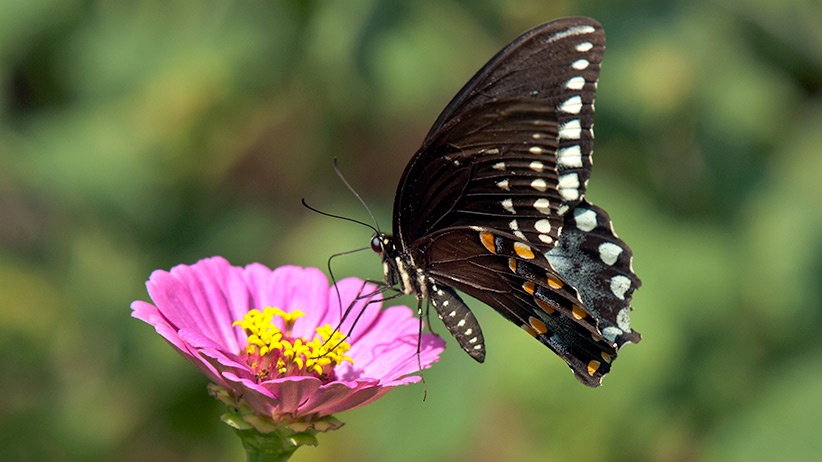
Have you ever watched butterflies as they flit from flower to flower? They don’t look like they know where they’re going, do they? Their flight patterns look as if they’ve been designed by a 2-year-old. But they do know what they’re doing — they’re looking for nectar.
Did you realize that butterflies taste with their feet? It’s true: When they land on a leaf or flower, they can actually taste it. That helps them find plants on which to feed and lay eggs. After all, they want to put their eggs on a plant that will provide food for the caterpillars as they hatch.
Fresh nectar for butterflies
Butterflies don’t have mouths that let them chew food. Instead, they have a proboscis, a long strawlike structure that allows them to drink nectar and other liquids they need for energy. Clusters of small flowers are popular feeding sites. A butterfly can draw nectar from many flowers without having to take off again. Large butterflies, such as monarchs and swallowtails, prefer wide landing areas, such as big zinnias (Zinnia elegans). Make sure to plant several bloom shapes so there’ll be something for everyone. And group flowers in one spot so butterflies don’t have to travel far.
Learn How To Design a Garden to Attract More Pollinators
Build a butterfly buffet
Since butterflies can’t get all of their nutrients from nectar, they gather around muddy areas, where they can suck up salts and minerals. Butterflies also like rotting fruit, so before you throw away that overripe banana, peel it and set it out as a dessert for your winged friends.
Many butterflies can’t fly unless their body temperature is around 86 degrees F. That’s why you see them resting on cool mornings and feeding on sunny afternoons. So it makes sense that most of the flowers they like grow best in full sun. It’s also helpful to place a rock in a sunny spot where butterflies can absorb heat as they sit.
Even with these accommodations, flowers are still the best way to draw flocks of these colorful insects. Give your butterflies happy feet with these eight favorites and check out which butterflies love them.
YOU MIGHT ALSO LIKE:
4 plant combos that butterflies love
Grow a garden hummingbirds will love
Meet 7 common garden pests
Blue flowers are best for bees



